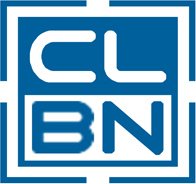Unlocking Tax Efficiency: The S86 Rollover and its Benefits for Family Businesses
In family tax planning, a Section 86 (S86) rollover refers to a tax provision that allows for the transfer of certain assets within a family group on a tax-deferred basis. The purpose of this rollover is to facilitate intergenerational transfers of assets while minimizing the immediate tax consequences that would typically arise from such transfers.
Mechanics of an S86 Rollover
- Eligible Assets: S86 rollovers apply to specific types of assets, typically shares of a corporation, partnership interests, or certain property types like depreciable property or eligible capital property. It is important to consult the tax regulations in your jurisdiction to determine which assets qualify for the rollover.
- Transfer at Adjusted Cost Base (ACB): Under an S86 rollover, the transfer of assets occurs at the adjusted cost base (ACB) of the assets. The ACB represents the original cost of the assets, adjusted for certain factors such as capital improvements, depreciation, and any previous rollovers. This transfer at the ACB ensures that the transfer does not trigger immediate capital gains taxes.
- Calculation of the Tax Consequences: While the transfer of assets occurs at the ACB, it is important to understand that the tax consequences are not entirely eliminated. The tax liability associated with the transferred assets is deferred until a future disposition or realization event, such as when the recipient sells or disposes of the assets.
- Reporting Requirements: Proper documentation and reporting are essential for S86 rollovers. The transferor (the party transferring the assets) and the transferee (the recipient of the assets) must report the transaction to the tax authorities, providing details of the assets transferred and their ACB.
Benefits of an S86 Rollover in Family Tax Planning
- Tax Deferral: The primary benefit of an S86 rollover is the deferral of capital gains tax. By transferring assets at their ACB, family members can defer the tax liability until a later date, potentially allowing for more effective tax planning and preserving capital within the family group.
- Succession Planning: S86 rollovers are commonly used in succession planning to facilitate the transfer of assets from one generation to the next. By deferring tax liabilities, family businesses can ensure a smooth transition while minimizing the financial burden on the recipient and maintaining operational continuity.
- Asset Protection: S86 rollovers can also provide asset protection by allowing the transferor to retain control over the assets during their lifetime. This can be advantageous in situations where the transferor wants to maintain control while gradually transferring ownership to the next generation.
- Estate Planning: S86 rollovers can be part of a broader estate planning strategy, allowing individuals to transfer assets to their beneficiaries while minimizing the tax impact. By deferring capital gains tax, the transferred assets can be passed on to heirs more efficiently, ensuring the preservation of wealth within the family.
It is important to consult with tax professionals and experts familiar with the specific tax laws and regulations in your jurisdiction to determine the eligibility, requirements, and implications of an S86 rollover in the context of your family tax planning goals. Proper planning and professional guidance are crucial to ensure compliance and maximize the benefits of an S86 rollover for your specific situation.

